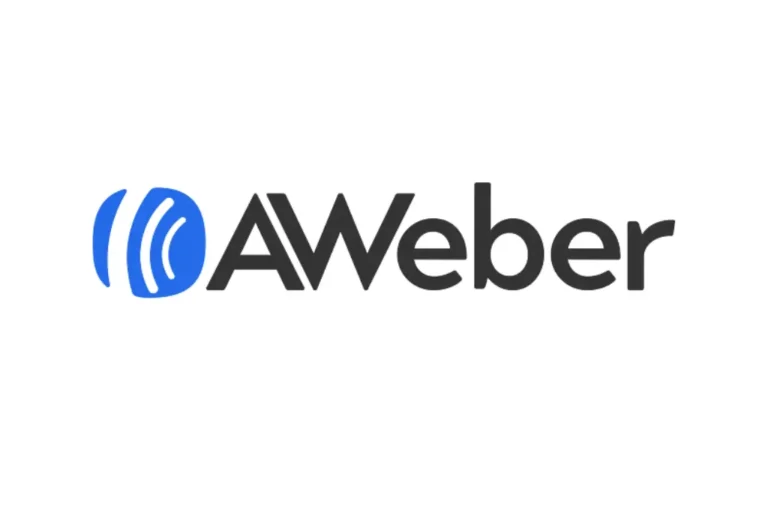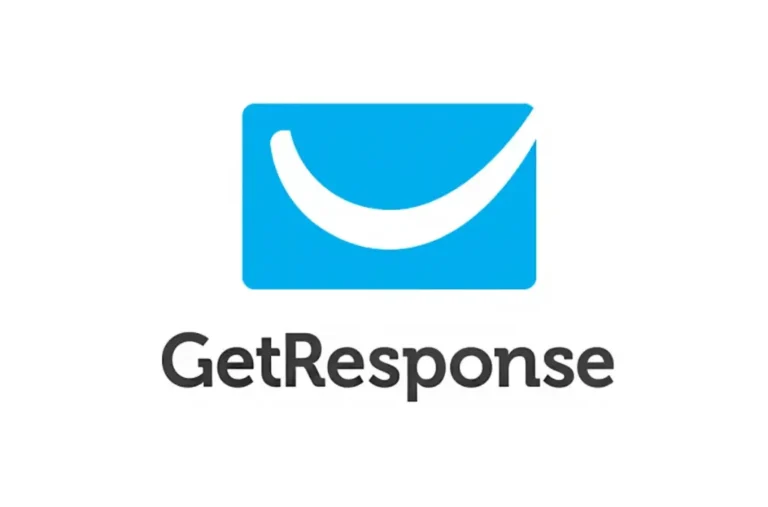Table of Content
Table of Contents
Introduction: Why Marketing Automation Matters Now More Than Ever
In today’s hyper-competitive digital landscape, marketers are drowning in an ocean of tasks. Email campaigns, social media posts, lead nurturing, customer segmentation—the list seems endless. If you’re spending more time on repetitive tasks than on strategy, you’re not alone. Marketing automation has emerged as the lifeline that successful businesses use to streamline operations, boost efficiency, and drive unprecedented growth.
This comprehensive guide will transform how you approach marketing. You’ll discover what marketing automation really means, explore proven strategies that work, and learn how to implement systems that work while you sleep. Whether you’re a marketing automation beginner or looking to refine your existing strategies, this guide delivers actionable insights you can implement immediately.
What is Marketing Automation? (The Clearest Definition on the Web)
What is meant by marketing automation? Simply put, marketing automation is the use of software and technology to automate repetitive marketing tasks, nurture leads through personalized experiences, and deliver the right message to the right person at the right time—all without manual intervention.
Think of marketing automation as your digital marketing assistant that never sleeps. Just as a thermostat automatically adjusts temperature based on preset conditions, marketing automation triggers specific actions based on customer behaviors, preferences, and data points.
Key Components of Marketing Automation:
- Software platforms that execute campaigns automatically
- Strategic workflows that map customer journeys
- Data integration that connects all your marketing touchpoints
- Personalization engines that customize experiences at scale
Modern marketing automation platforms like HubSpot offer comprehensive suites that integrate CRM, email marketing, and analytics, while specialized tools like AWeber and GetResponse excel in email automation. All-in-one solutions like Systeme.io provide everything from landing pages to automation workflows in a single platform.
The Undeniable Benefits of Marketing Automation (Beyond the Obvious)
Increased Efficiency & Productivity
Marketing automation eliminates up to 80% of repetitive tasks, freeing your team to focus on strategy and creativity. Companies using automation see a 451% increase in qualified leads, according to recent studies.
Improved Lead Generation & Nurturing
Automated lead scoring and nurturing workflows ensure no prospect falls through the cracks. Your leads receive timely, relevant content that guides them naturally toward purchase decisions.
Enhanced Personalization & Customer Experience
Modern consumers expect personalized experiences. Automation enables you to deliver customized content based on behavior, preferences, and purchase history—at scale.
Better Sales and Marketing Alignment
Automation bridges the gap between marketing and sales teams by providing clear lead handoff processes and shared visibility into prospect behavior.
Detailed Reporting & Analytics
Data-driven decisions become effortless with automated reporting. Track campaign performance, ROI, and customer behavior patterns with precision.
Scalability for Business Growth
As your business grows, automation scales with you. Handle 10x more leads without proportionally increasing your team size.
Cost Savings Breakdown:
- Average time savings: 6+ hours per week per marketer
- Lead generation cost reduction: 35-50%
- Email marketing efficiency increase: 320%
Read: GetResponse Reviews 2025: Pros & Cons and Powerful Features
Core Features & Capabilities of Marketing Automation Platforms
Email Marketing Automation
The foundation of most automation strategies, email marketing encompasses:
Drip Campaigns: Automated email sequences triggered by specific actions
- Welcome series for new subscribers
- Educational nurture sequences
- Re-engagement campaigns for inactive subscribers
Advanced Segmentation: Group contacts based on behavior, demographics, and preferences
- AWeber excels at intuitive segmentation with its drag-and-drop interface
- GetResponse offers advanced behavioral targeting
- HubSpot provides comprehensive contact scoring and segmentation
A/B Testing: Optimize subject lines, content, and send times automatically
Social Media Marketing Automation
Streamline your social presence with:
- Content scheduling across multiple platforms
- Social listening for brand mentions and engagement opportunities
- Automated responses to common inquiries
Lead Management & Scoring
Identify your hottest prospects through:
- Lead capture via forms and landing pages
- Behavioral scoring based on website activity
- Automated lead routing to appropriate sales team members
CRM Integration
Seamlessly connect your marketing and sales data:
- Systeme.io offers built-in CRM functionality
- HubSpot provides native CRM integration
- GetResponse and AWeber integrate with popular CRM platforms
Workflow Automation
Visual workflow builders enable you to create complex automation sequences without coding knowledge. Set triggers, conditions, and actions that respond to customer behavior in real-time.
Developing Your Marketing Automation Strategy (Step-by-Step)
Successful marketing automation strategies start with clear planning and execution. Here’s your roadmap:
Step 1: Set SMART Goals
Define specific, measurable objectives:
- Increase lead generation by 40% in 6 months
- Improve email open rates by 25%
- Reduce manual task time by 50%
Step 2: Map Your Customer Journey
Understanding your buyer’s path is crucial for effective automation:
| Stage | Customer Mindset | Automation Opportunity |
|---|---|---|
| Awareness | “I have a problem” | Educational content delivery |
| Consideration | “What are my options?” | Comparison guides, case studies |
| Decision | “Which solution is best?” | Product demos, testimonials |
| Retention | “Am I getting value?” | Onboarding, support content |
Step 3: Choose Your Automation Triggers
Common triggers that start automation workflows:
- Email subscription
- Website page visits
- Download completion
- Shopping cart abandonment
- Purchase completion
Step 4: Plan Content for Each Journey Stage
Align your content with customer needs at each stage. Create a content inventory that includes:
- Blog posts and educational resources
- Email templates
- Social media content
- Landing pages
Step 5: Select and Configure Your Tools
Choose platforms that align with your goals and budget:
For Small Businesses: Systeme.io offers comprehensive automation at an affordable price point For Email-Focused Campaigns: AWeber and GetResponse provide robust email automation For Enterprise Solutions: HubSpot delivers advanced features and integrations
Marketing Automation in Action: Real-World Examples & Case Studies
B2B Example: Software Company Lead Nurturing
A SaaS company used HubSpot to create a 12-email nurture sequence for trial users. By delivering targeted tips and case studies based on user behavior, they increased trial-to-paid conversion by 67%.
B2C Example: E-commerce Customer Retention
An online retailer implemented abandoned cart recovery using GetResponse, sending personalized reminders with product images and customer reviews. This strategy recovered 35% of abandoned purchases.
Ecommerce Marketing Automation: Post-Purchase Follow-up
Ecommerce marketing automation excels in:
- Welcome series for new customers
- Product recommendation engines based on purchase history
- Loyalty program automation
- Review request sequences
Small Business Success: Local Service Provider
A local consulting firm used AWeber to automate their lead qualification process. New leads received an immediate welcome email followed by a series of case studies relevant to their industry, resulting in a 45% increase in consultation bookings.
Choosing the Right Marketing Automation Software (The “Best Tool” Question Answered Smartly)
Which marketing automation tool is best? The answer depends entirely on your specific needs, budget, and goals. Here’s a framework for making the right choice:
Assessment Framework:
Current Needs Analysis:
- Email list size and growth rate
- Number of marketing channels you use
- Integration requirements with existing tools
- Team size and technical expertise
Budget Considerations: Create a total cost analysis including:
- Monthly/annual subscription fees
- Setup and onboarding costs
- Training expenses
- Additional feature costs
Platform Comparison Guide:
| Feature | AWeber | GetResponse | HubSpot | Systeme.io |
|---|---|---|---|---|
| Email Automation | ★★★★★ | ★★★★★ | ★★★★★ | ★★★★☆ |
| CRM Integration | ★★★☆☆ | ★★★★☆ | ★★★★★ | ★★★★★ |
| Landing Pages | ★★★☆☆ | ★★★★☆ | ★★★★☆ | ★★★★★ |
| Pricing | ★★★★☆ | ★★★★☆ | ★★☆☆☆ | ★★★★★ |
| Ease of Use | ★★★★★ | ★★★★☆ | ★★★☆☆ | ★★★★★ |
Scalability Considerations:
- AWeber: Perfect for email-focused small businesses
- GetResponse: Excellent for growing companies needing webinar integration
- HubSpot: Ideal for businesses requiring comprehensive marketing and sales alignment
- Systeme.io: Best all-in-one solution for entrepreneurs and small businesses
Getting Started: Your First Steps into Marketing Automation
Marketing automation for beginners doesn’t have to be overwhelming. Start with these foundational steps:
Week 1: Data Preparation
- Clean your email list
- Segment contacts by basic criteria (industry, role, engagement level)
- Set up basic tracking codes
Week 2: First Automation Setup
Create a simple welcome email series:
- Immediate welcome email
- Value-driven content (2 days later)
- Social proof/testimonials (1 week later)
Week 3: Expand and Optimize
- Add basic lead scoring
- Set up abandoned cart recovery (if ecommerce)
- Create re-engagement campaigns
Training Your Team
Successful automation requires team buy-in:
- Document processes clearly
- Provide platform training for all users
- Establish review schedules for automation performance
Advanced Marketing Automation Tactics (For When You’re Ready)
Predictive Lead Scoring
Use machine learning algorithms to score leads based on historical conversion data and behavioral patterns.
Dynamic Content Personalization
Serve different content blocks within the same email based on recipient characteristics:
- Industry-specific case studies
- Location-based offers
- Behavioral recommendations
Multi-Channel Automation
Coordinate messaging across email, social media, SMS, and direct mail for cohesive customer experiences.
AI-Powered Optimization
Modern platforms use artificial intelligence to:
- Optimize send times for individual recipients
- Predict customer lifetime value
- Suggest content improvements
Measuring Marketing Automation Success: Key Metrics & KPIs
Track these essential metrics to gauge automation performance:
Email Engagement Metrics
- Open Rate: Industry average 21.33%
- Click-Through Rate: Industry average 2.62%
- Conversion Rate: Varies by industry (1-5%)
Lead Generation Metrics
- Marketing Qualified Leads (MQLs): Leads that meet your scoring criteria
- Sales Qualified Leads (SQLs): MQLs that sales teams accept
- Conversion Rate: Percentage of leads that become customers
Revenue Metrics
- Customer Acquisition Cost (CAC): Total marketing spend divided by new customers
- Customer Lifetime Value (CLV): Predicted revenue from customer relationship
- Return on Investment (ROI): Revenue generated divided by automation investment
Engagement Metrics
- Email List Growth Rate: Monthly percentage increase in subscribers
- Unsubscribe Rate: Should remain below 0.5%
- Social Media Engagement: Likes, shares, comments on automated posts
The Future of Marketing Automation: Trends to Watch
Artificial Intelligence Integration
AI will increasingly handle:
- Content creation and optimization
- Predictive customer behavior analysis
- Real-time personalization at scale
Hyper-Personalization
Move beyond basic segmentation to individual-level customization based on:
- Real-time behavior
- Predictive preferences
- Cross-channel interactions
Conversational Marketing Integration
Chatbots and automation will work together to:
- Qualify leads instantly
- Provide personalized recommendations
- Schedule meetings automatically
Data Privacy Evolution
Prepare for increasing privacy regulations by:
- Building first-party data strategies
- Implementing consent management
- Focusing on value exchange for data
Conclusion: Taking the Next Step
Marketing automation isn’t just about efficiency—it’s about creating meaningful connections with your audience at scale. The strategies, tools, and tactics outlined in this guide provide your roadmap to marketing automation success.
Key Takeaways:
- Start with clear goals and customer journey mapping
- Choose tools that align with your specific needs and budget
- Begin with simple automations and gradually increase complexity
- Measure performance consistently and optimize based on data
Your Next Actions:
- Assess your current marketing processes
- Choose an automation platform that fits your needs
- Set up your first welcome email series
- Monitor performance and iterate
Ready to transform your marketing with automation?
Whether you choose AWeber for robust email marketing, GetResponse for comprehensive automation features, HubSpot for enterprise-level capabilities, or Systeme.io for an all-in-one solution, the key is to start today.
FAQ Section
Q: What is meant by marketing automation? A: Marketing automation uses software to automatically execute marketing tasks, nurture leads, and deliver personalized messages based on customer behavior and predefined triggers.
Q: Which marketing automation tool is best? A: The best tool depends on your specific needs. AWeber excels for email marketing, GetResponse offers comprehensive automation, HubSpot provides enterprise features, and Systeme.io delivers all-in-one value for small businesses.
Q: How much does marketing automation cost? A: Costs range from $10/month for basic tools like AWeber to $800+/month for enterprise solutions like HubSpot. Mid-range options like GetResponse and Systeme.io typically cost $50-200/month.
Q: How long does it take to see results from marketing automation? A: Most businesses see initial improvements within 30-60 days, with significant ROI typically achieved within 3-6 months of implementation.
Q: Can small businesses benefit from marketing automation? A: Absolutely. Small businesses often see the biggest impact from automation due to limited resources. Tools like Systeme.io and AWeber are specifically designed for smaller organizations.
Q: What’s the difference between email marketing and marketing automation? A: Email marketing is one component of marketing automation. Automation encompasses email, social media, lead scoring, CRM integration, and cross-channel campaign management.
Q: How do I choose between different automation platforms? A: Consider your budget, technical expertise, integration needs, and primary use cases. Start with your most critical need (email, CRM, landing pages) and choose a platform that excels in that area.




